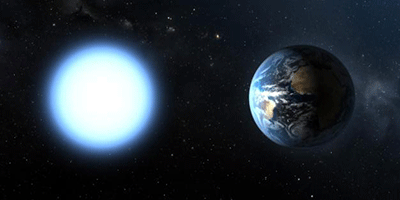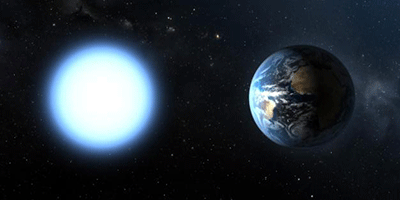Fundamental Constant Doesn’t Budge in High Gravity
The fundamental constants of nature may not be constant in a changing gravitational field. A new study tests this hypothesis by analyzing absorption lines from ions in the vicinity of a very dense white dwarf star. The lines show no significant deviation compared to those measured on Earth. The authors conclude in Physical Review Letters that any variations in the fine structure constant from gravity must be less than one part in ten thousand.
Certain theories predict the existence of scalar fields that pervade all of space and may influence the value of fundamental masses and coupling constants. One way to detect this influence is to make a measurement in a stronger gravity field, where the scalar field should be more concentrated and fundamental constants may take a different value. Previous experiments have looked unsuccessfully for a change in the (electromagnetic) fine structure constant using small (around 3%) gravity variations on Earth.
To explore stronger gravity effects, Julian Berengut of the University of New South Wales, Australia, and his colleagues analyzed astronomical data from a white dwarf. Specifically, they studied absorption lines from iron and nickel ions in the dwarf’s atmosphere, where the gravitational potential is 30,000 times greater than Earth’s. The researchers compared the dwarf lines to the same lines observed in the laboratory and found no discrepancy, which implies a “constant” fine structure constant to within limits that are similar to earlier studies. However, the authors claim the white dwarf constraint can be tightened by a factor of 100 with improved laboratory measurements. – Michael Schirber





